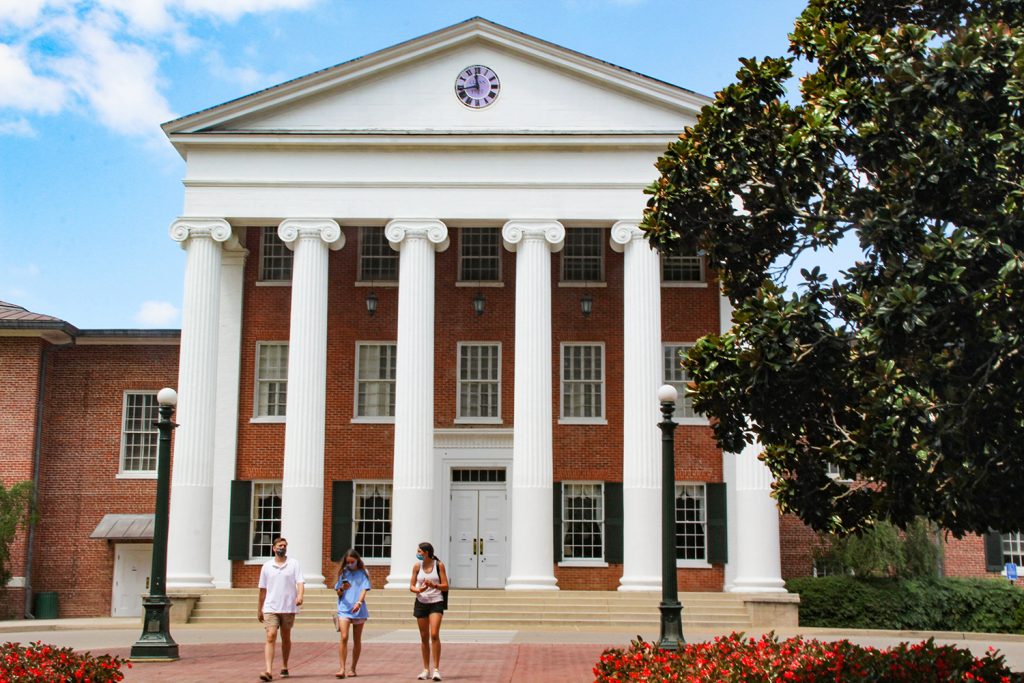My return to Oxford looks different from what I imagined when I left. Behind my mask, I smile at familiar faces while walking in the Circle, despite obstructed views and a six-foot distance between us. I want to return to normal, but I am less than optimistic that the existing COVID-19 safety protocols will make that a reality. Mass testing for COVID-19 should have been the first step in the university’s playbook, and for the sake of the UM community, hopefully, it’s not too late to incorporate into existing plans.
My newsfeed is filled with headlines of schools like Michigan State, Notre Dame and UNC-Chapel Hill shutting down after less than two weeks after classes started, interspersed with viral videos of college students partying in fields in Oklahoma and Georgia. College students should be held accountable for their own actions and how they impact those around them, but university administration should help facilitate a campus environment that limits the danger of the often questionable decision-making skills of people whose brains have not fully developed yet.
15 student-athletes already tested positive for COVID-19 before classes started, constituting an outbreak by the Mississippi State Department of Health’s standards. The university mass-tested student-athletes for COVID-19, but what about the thousands of students arriving on campus who aren’t tested?
The Centers for Disease Control and Prevention (CDC) outlines COVID-19 testing as one feature of a comprehensive strategy to reduce the spread of the virus. The University of Alabama outlined that “Students cannot return to campus for any reason – attend class, workout at the Student Rec Center, take part in social or other organized events, etc. – until they submit a negative COVID-19 test result.” UM has no similar requirements for testing.
The university’s COVID-19 resource page features information on how to access free testing and instructs students to take their temperatures if symptoms develop. Early reports showed that as testing increased and expanded beyond those who were symptomatic, young people made up a significant portion of those testing positive for COVID-19. Without a testing requirement like our peer institutions, the university is bound to face the consequences of community spread sooner or later.
Even requiring a negative test to return to campus does not insure the LOU community’s safety. Auburn required COVID-19 screenings for all students on campus this fall, yet it already shut down a fraternity house and a floor of a sorority dorm because of outbreaks. The logistics of universal testing are extensive, and the process is nowhere near cheap. However, when considering the potential cost of shutting down dorms and sending students back home mid-semester, developing an effective testing plan sounds more efficient.
Greater than the financial expenses associated with testing is the mental and physical damage that the pandemic is inflicting on students. Yale administrator and psychology professor Laurie Santos wrote in an email to her students, “We all should be emotionally prepared for widespread infections — and possibly deaths — in our community. You should emotionally prepare for the fact that your residential college life will look more like a hospital unit than a residential college.” This horrific depiction may be a worst-case scenario, but the community should do everything in their power to prevent this from happening, beginning with mass testing.
It’s hard to imagine the Grove empty this fall. But what brings me more pain is the thought of tailgating next fall, with a slightly less packed Grove, feeling the loss of the students, faculty, and community members who may die due to COVID-19. Require testing, or risk student, faculty, staff, and community lives lost. Better late than never.















